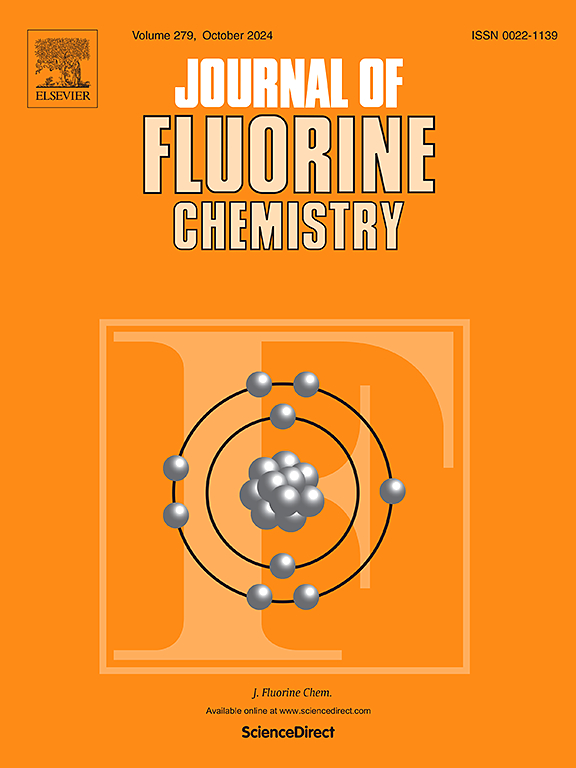用二氟化铵提纯四氟化铀
IF 1.9
4区 化学
Q3 CHEMISTRY, INORGANIC & NUCLEAR
引用次数: 0
摘要
研究了一种利用NH4HF2提纯UF4的方法,以去除盐中的氧和水合杂质。原始盐的熔点为915-920℃,与UF4-UO2体系的共晶温度相对应,显示出明显的氧污染迹象。为了提纯盐,在氩气手套箱内的气密反应容器在连续流动的惰性气体下,在高温下对UF4/NH4HF2混合物进行反应。通过惰性气体熔合、x射线衍射、差示扫描量热法和电感耦合等离子体光学发射光谱法证实,该工艺产生了明显纯净的UF4盐。本文章由计算机程序翻译,如有差异,请以英文原文为准。

Purification of uranium tetrafluoride using ammonium bifluoride
A method of purification for UF4 utilizing NH4HF2 was investigated to remove oxygen and hydrate impurities from the salt. The original salt exhibited a melting point at 915–920 °C, which corresponds to the eutectic temperature of the UF4-UO2 system, showing clear signs of oxygen contamination. To purify the salt, an air-tight reaction vessel inside an argon glovebox was used to react UF4/NH4HF2 mixtures at elevated temperatures under a continuous flow of inert gas. The process yielded a significantly purer UF4 salt as confirmed via inert gas fusion, X-ray diffraction, differential scanning calorimetry and inductively coupled plasma-optical emission spectrometry.
求助全文
通过发布文献求助,成功后即可免费获取论文全文。
去求助
来源期刊

Journal of Fluorine Chemistry
化学-无机化学与核化学
CiteScore
3.80
自引率
10.50%
发文量
99
审稿时长
33 days
期刊介绍:
The Journal of Fluorine Chemistry contains reviews, original papers and short communications. The journal covers all aspects of pure and applied research on the chemistry as well as on the applications of fluorine, and of compounds or materials where fluorine exercises significant effects. This can include all chemistry research areas (inorganic, organic, organometallic, macromolecular and physical chemistry) but also includes papers on biological/biochemical related aspects of Fluorine chemistry as well as medicinal, agrochemical and pharmacological research. The Journal of Fluorine Chemistry also publishes environmental and industrial papers dealing with aspects of Fluorine chemistry on energy and material sciences. Preparative and physico-chemical investigations as well as theoretical, structural and mechanistic aspects are covered. The Journal, however, does not accept work of purely routine nature.
For reviews and special issues on particular topics of fluorine chemistry or from selected symposia, please contact the Regional Editors for further details.
 求助内容:
求助内容: 应助结果提醒方式:
应助结果提醒方式:


